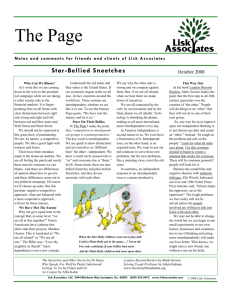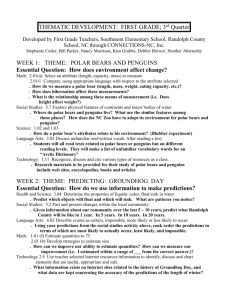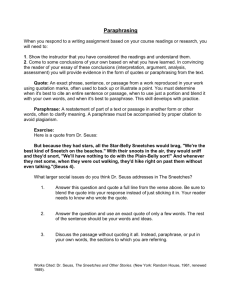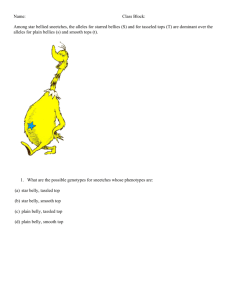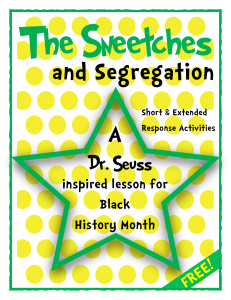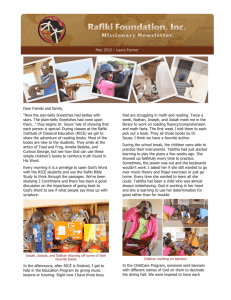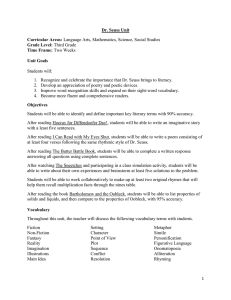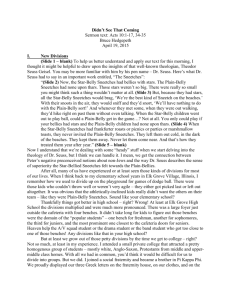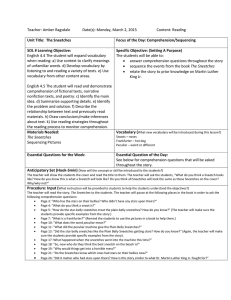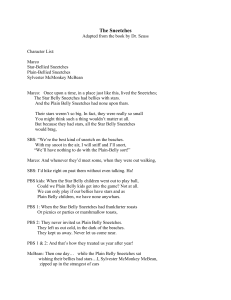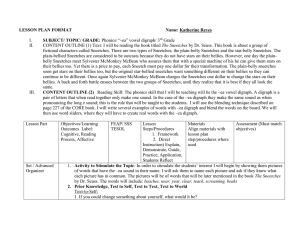The Sneetches and Other Stories
advertisement
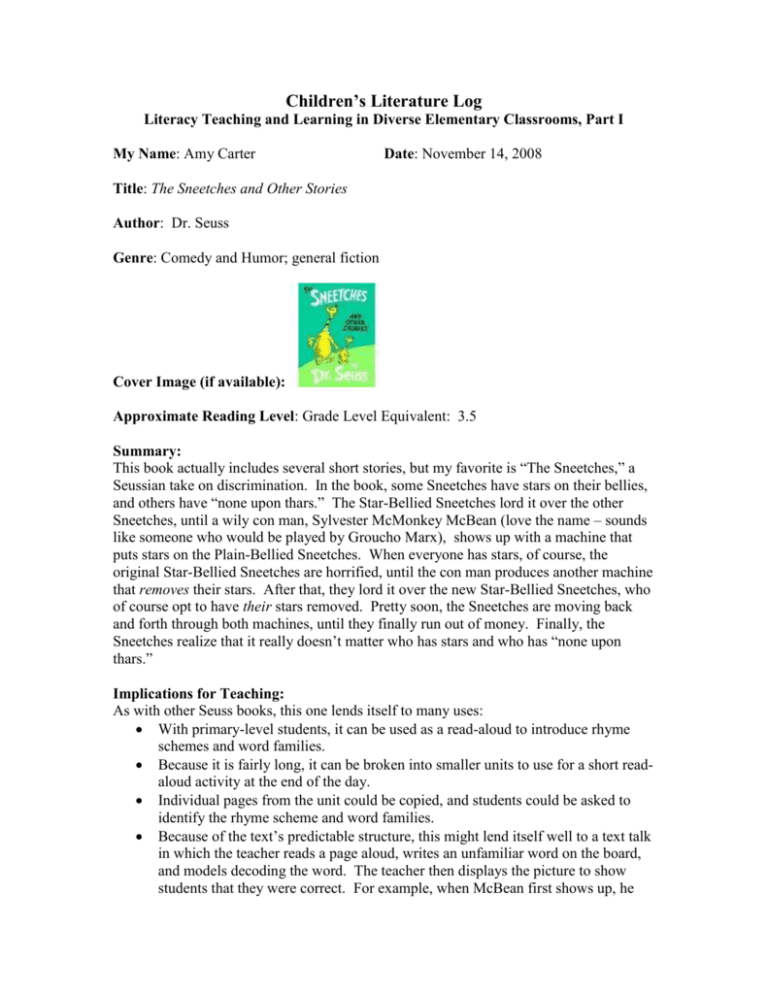
Children’s Literature Log Literacy Teaching and Learning in Diverse Elementary Classrooms, Part I My Name: Amy Carter Date: November 14, 2008 Title: The Sneetches and Other Stories Author: Dr. Seuss Genre: Comedy and Humor; general fiction Cover Image (if available): Approximate Reading Level: Grade Level Equivalent: 3.5 Summary: This book actually includes several short stories, but my favorite is “The Sneetches,” a Seussian take on discrimination. In the book, some Sneetches have stars on their bellies, and others have “none upon thars.” The Star-Bellied Sneetches lord it over the other Sneetches, until a wily con man, Sylvester McMonkey McBean (love the name – sounds like someone who would be played by Groucho Marx), shows up with a machine that puts stars on the Plain-Bellied Sneetches. When everyone has stars, of course, the original Star-Bellied Sneetches are horrified, until the con man produces another machine that removes their stars. After that, they lord it over the new Star-Bellied Sneetches, who of course opt to have their stars removed. Pretty soon, the Sneetches are moving back and forth through both machines, until they finally run out of money. Finally, the Sneetches realize that it really doesn’t matter who has stars and who has “none upon thars.” Implications for Teaching: As with other Seuss books, this one lends itself to many uses: With primary-level students, it can be used as a read-aloud to introduce rhyme schemes and word families. Because it is fairly long, it can be broken into smaller units to use for a short readaloud activity at the end of the day. Individual pages from the unit could be copied, and students could be asked to identify the rhyme scheme and word families. Because of the text’s predictable structure, this might lend itself well to a text talk in which the teacher reads a page aloud, writes an unfamiliar word on the board, and models decoding the word. The teacher then displays the picture to show students that they were correct. For example, when McBean first shows up, he tells the Sneetches his work is “100 per cent guaranteed.” Follow-up questions would encourage students’ higher-order thinking skills: o What does “guaranteed” mean? (Bloom’s taxonomy level 2 – comprehension); o Can you give me an example of something “guaranteed”? (Level 3 – application) o Why do we want things “guaranteed”? (Level 4 – analysis) o How could you test a guarantee? (Level 5 – synthesis) o Can something be “guaranteed” if it is not “100 percent”? How we measure “guaranteed”? Is it an absolute? (Level 6 – evaluation) Other questions about the text could also encourage higher-order thinking. For example, when the con man shows up with his Star-On machine, students could be asked to identify the machine’s parts. Then, when he brings out the Star-Off machine, students could compare and contrast the two. o What parts are the same? What are different? (Level 4 – analysis). o What do you think the insides of the machines look like? (Level 5 – synthesis). Because Seuss’s rhymes flow off the tongue so easily, more advanced readers will enjoy the challenge of reading the text aloud. It could be used very effectively in a buddy-reading program between an intermediate and a primary class. The rhymes also might make this book useful for a repeated reading strategy to improve a student’s fluency. Dr. Jacquelynn Malloy tells me that she used Sneetches for a class play. It sounds like a great idea, so I’d steal it. Students could tape stars to their bellies, decorate a refrigerator box to resemble a Star-On machine (if they flip it around, the other side could be the Star-Off machine), practice lines from the book (improving their fluency and their oral language skills), and act it out for a younger class. As an alternative to the play, it could be a puppet show. Students could make Sneetch puppets using construction paper cut-outs glued to popsicle sticks. The Sneetches would be two-sided, with stars on one side. The Star-On and Star-Off machines would be easy to make out of boxes. For the scene where the Sneetches are moving back and forth between the machines, as the action becomes more frenetic, it would be funny just to have the students spin the popsicle sticks in their hands. (This could be a small-group project as part of an author study on Dr. Seuss, in which various reading groups read different Seuss books and create various culminating products.) As a follow-on activity, students might watch Seuss videos. I looked online to see if the video of The Sneetches is still available. It was released as part of the DVD Dr. Seuss: Green Eggs and Ham and Other Stories (Universal, 2003). I didn’t find it at Amazon.com, but used versions might still be circulating on eBay. School libraries might also have it (the Prince William County library’s only copy is lost). Finally, and perhaps most obviously, this would be a great read-aloud for a unit on diversity and fairness. One could contrast the treatment of the Plain-Bellied Sneetches (who are not allowed on the beaches), with other examples of discrimination, such as Jim Crow laws in the American South and the caste system in India.
